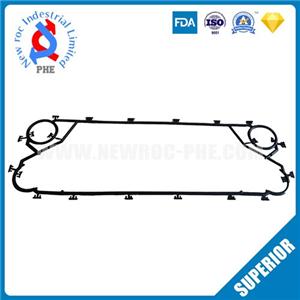9 Tips For Plate-and-Frame Heat Exchangers-1
Evaluating your process will help you specify a plate-and-frame heat exchanger that is right for your application. Use these 10 tips to specify your next plate heat exchanger and maximize its service life.
It is no surprise that plate-and-frame heat exchangers (PHEs) offer good heat transfer. But, there are several important factors you must keep in mind as a specifier or user of PHEs. For instance, if the PHE is to be used in conjunction with a cooling tower, it should be designed for the water treatment chemicals being used to treat the tower water. Also, it is easier to prevent a heat exchanger from leaking than to stop a leak once it occurs. And, did you know that you can minimize erosion in the port area by lowering nozzle velocities?
Consider the following 9 tips when choosing and using your next plate-and-frame heat exchanger.

Figure 1. Two liquid streams enter and exit a heat exchanger from the hot side and the cold side. As a result, there are four temperatures to consider when sizing the heat exchanger: hot side inlet, hot side outlet, cold side inlet and cold side outlet.
TIP 1: Tell Them Everything
Be sure to communicate all pertinent information regarding your application to the manufacturer when you request a quotation. Two liquid streams, referred to as the "hot side" and the "cold side," go into and come out of a heat exchanger (figure 1). As a result, there are four temperatures to consider when sizing the heat exchanger: hot side inlet, hot side outlet, cold side inlet and cold side outlet.
The minimum information needed to size the heat exchanger for both the hot and cold sides are: fluid names, flow rates, inlet temperature, outlet temperature, operating pressures and maximum pressure drop allowed across the unit. For fluids that are uncommon or proprietary, physical properties such as viscosity at inlet and outlet temperatures, thermal conductivity, specific gravity and specific heat will be needed. Most manufacturers have a design questionnaire available for you to use when collecting data for a heat exchanger application and would be eager to furnish you with a copy




